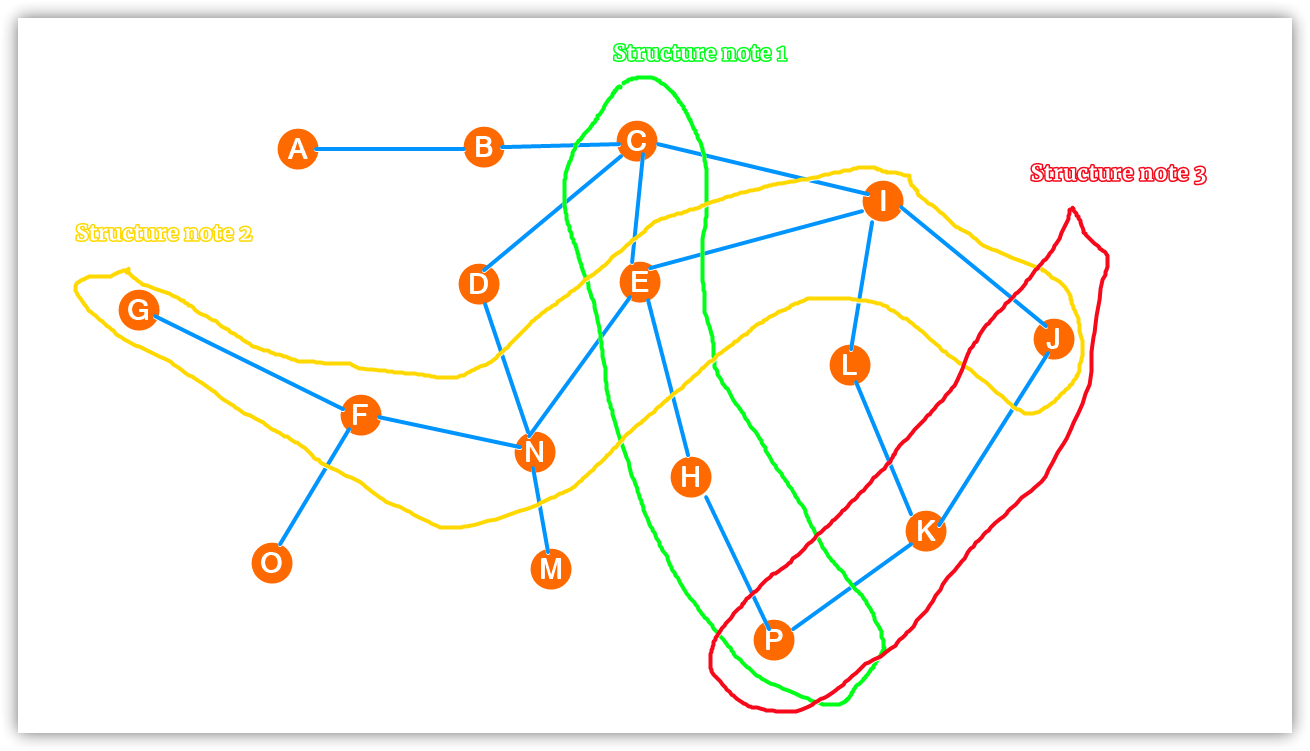Visual representation of how structure notes capture trails | Nested structure notes
The image below is my (unappealing) representation of how a Structure Note captures thought trails, based on my understanding and what I've been doing lately:

- Is this correct?
- Sometimes the contents of structure notes have structure notes themselves. How do you approach developing these ideas?
Howdy, Stranger!

Comments
I think this captures the overlapping trails and the emerging semilattice of thought strings nicely.
That's only natural, so I wonder: what kind of problem do you have with that, or what are you anxious about to be happening?
Author at Zettelkasten.de • https://christiantietze.de/
@ctietze I don't have a problem with it per se, but since I'm transitioning into UID systems (as per my last post) I'm now trying to dig deeper into the method.
Anyway, since that post on my counterarguments against Folgezettel was largely ignored—perhaps due to the title—I'm going to restate my questions here:
Your bottom-most layer is pure content; AFAIK, Sascha uses
Ü2as the first meta-layer that contains structure notes which in turn point to content notes to order them;Ü1is the meta-meta-layer that brings order to structure notes first and foremost, but can of course also link to content notes.Üis simple to type on a German keyboard layout, so you might want to pick something elseIf note A and B are related, and you want to write about their being connected, you can encapsulate the comment in another Zettel. I think I buried a diagram for this in the forums somewhere; the closest I could find was this post: https://forum.zettelkasten.de/discussion/comment/5437/#Comment_5437
Edit: Found it! https://forum.zettelkasten.de/discussion/comment/4185/#Comment_4185
That does not necessarily make it a structure Zettel in my book. But then again my proverbial book is not very structured, so YMMV and a structure is indeed hidden in there.
Both! You offload a lot of knowledge to your Zettelkasten over time and cannot remember everything. You need to check stuff manually to load this into your working memory to get to the point where you established structures you can further rely on. After that, less checking and grunt work may be necessary.
Author at Zettelkasten.de • https://christiantietze.de/
I'll use L1 and L2, then It's getting clearer now -- since "Ü1" means top level, it means when a topic emerges on top of it, that new topic becomes "Ü1" and the previous "Ü1" turns into "Ü2". Since we use UID's as links, it won't produce broken links. Am I on the right track?
It's getting clearer now -- since "Ü1" means top level, it means when a topic emerges on top of it, that new topic becomes "Ü1" and the previous "Ü1" turns into "Ü2". Since we use UID's as links, it won't produce broken links. Am I on the right track?
Your explanation does clarify it; It seems like there are sort of "mini structure notes" whose purpose is to reify implicit meanings, and some outline-type structure notes that organizes a huge pool of zettels.
In addition to establishing structures for your future self, would the linking workflow look like this?